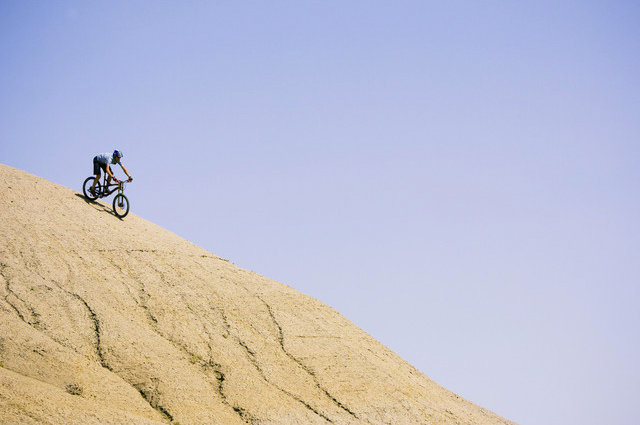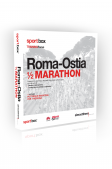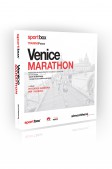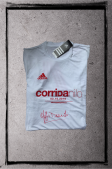
Amongst the different challenges involved in mountain biking, the descent is definitely the most complex – stones, roots, gravel, changes in elevation, exposed rocks, steps, and off-camber corners are all ready to threaten the safety of a biker’s shins.
Look ahead:
Always look at least a couple of metres ahead of the front wheel in order to see any obstacles in advance. The quicker you are descending the further ahead you need to look – as the travelling speed increases, so the reaction time shortens.
Brake consciously:
Don’t brake randomly, brake primarily with the rear brake, using the front brake to provide stability if the rear wheel has started to skid.
Use your weight:
The more you centralise your weight, the more stable the bike will be, although in steep descents you’ll need to shift your weight towards the rear wheel and flattern your body over the handlebars.
Control the technical settings:
Tyre pressure never above 2,5 bar, suspension fork unlocked yet never bottoming out.
Increase the level of difficulty in stages:
It is advisable to start with easy descents that you know well, it will reduce the sensation of incline and as a result also fear and muscle tension. The descent should be tackled at low speed the first time so that you can memorise the route through the obstacles, then quicker, until you get to an acceptable compromise between speed and safety. After some practise you will have developed a series of habits that you’ll be able to reproduce when descending unknown terrain.
Mud, bumps and bruises are part of the sport, in this no-one, not even the champions are excluded, although woods are less dangerous than roads. The difference lies always, however, in the use of intelligence – intelligent behaviour on the part of the cyclist combined with their knowledge and understanding of their bike.
In other words bike like an adult, have fun like a child!



 Subscribe to our newsletter to have the latest updates delivered straight to your inbox.
Subscribe to our newsletter to have the latest updates delivered straight to your inbox. TRI60 DISTANCE TRAINING
TRI60 DISTANCE TRAINING  Sportbox Training Focus Roma-Ostia Half Marathon 2019
Sportbox Training Focus Roma-Ostia Half Marathon 2019  Sportbox Training Focus Venice Marathon 2019
Sportbox Training Focus Venice Marathon 2019  t-shirt limited edition autographed by Danilo Goffi
t-shirt limited edition autographed by Danilo Goffi  Women's Sitting technical t-shirt
Women's Sitting technical t-shirt  Women's dove voglio technical t-shirt
Women's dove voglio technical t-shirt 